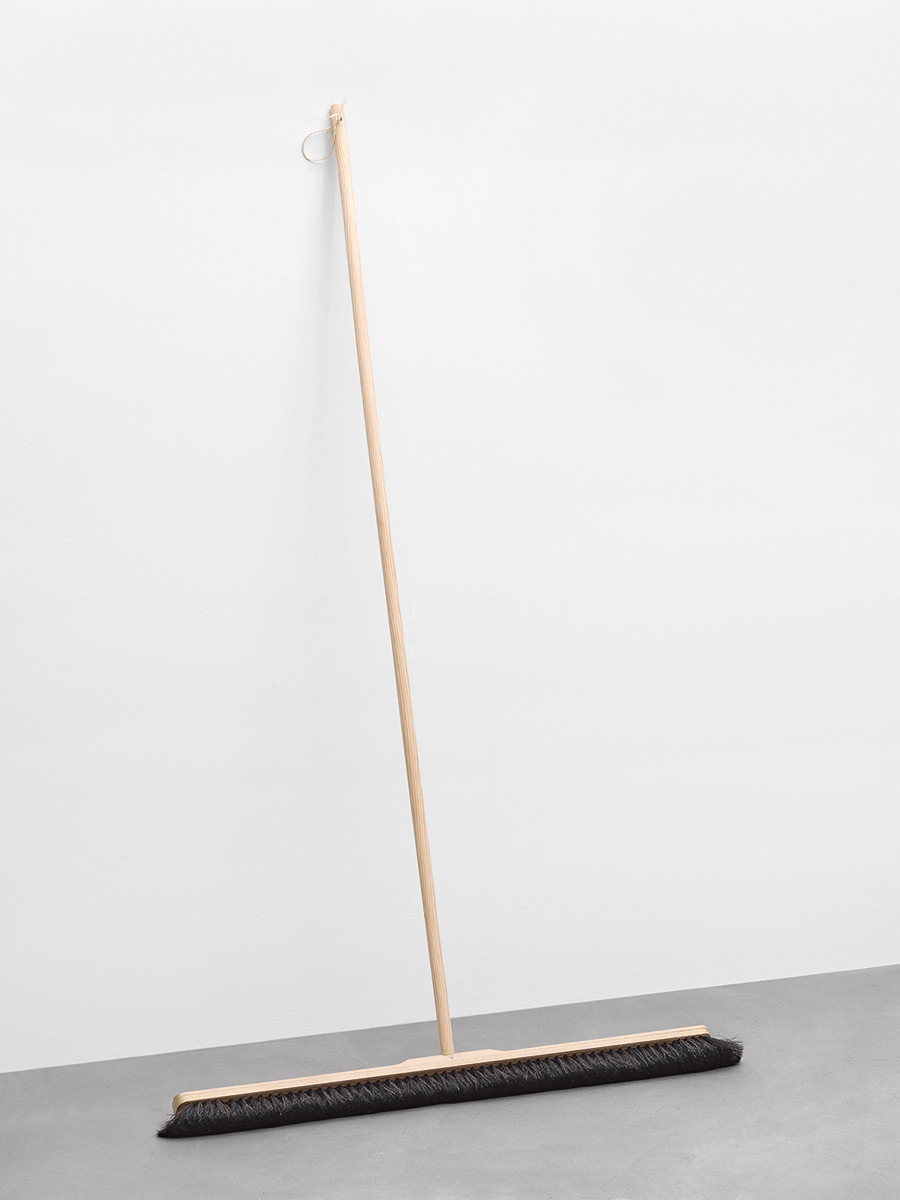Invisible Front: The Quiet Contentiousness of Maria Eichhorn
Eichhorn’s quasi-retrospective at Zurich’s Migros Museum highlights the artist’s complex contestations in simple, often invisible, form
Eichhorn’s quasi-retrospective at Zurich’s Migros Museum highlights the artist’s complex contestations in simple, often invisible, form

An art museum’s constituent activity is its existence and operation as a space for representation. Even if we would often like to perceive institutions as neutral zones (whatever their architecture), money matters; someone makes that activity possible. In this particular instance we’re in a private museum underwritten by a national supermarket chain, and the majority of the works in this Maria Eichhorn exhibition, which surveys 30 years of practice, are from the museum collection.

‘12 Works (1988-2018)’ is as spare as its title. Twelve works are exhibited airily over the whole institution, from the eponymous Saalbesen (Industrial Broom, 2011) leaning against one wall to scarcely perceptible pieces like Limmatstrasse 270, 8005 Zürich (2011/2018), the owner of the work’s address painted on a wall in the same colour as that same wall. The upper storey is occupied by 72 Bilder (72 Pictures, 1992/3), an endeavour realised during an exhibition at the Musée d’Art moderne de la Ville de Paris. For open days of a group exhibition there, a volunteer painted a primed canvas with one colour from a manufacturer’s off-the-shelf range: each is labelled with its maker; the names Hans-Ulrich Obrist and Eva Presenhuber and Barbara Weiss, the artist’s gallerists, stand out amid less familiar ones, though their brush strokes are unremarkable. Materials are hardly of any importance; the works are sometimes complex statements in simple form that relate to presence, ownership, consumption, protest and censorship.
Eichhorn’s art is socially engaged, raising the question of whether to demonstrate (that is, to exhibit) is the same as to demonstrate on the streets? Does acting in the cultural sphere equate with action? The artist addresses this in Militant (2010), a film of a teenager sprawled on a bed reading; we’re told in the gallery text she’s reading the section ‘Militant’ from the chapter ‘The Decline and Fall of Empire: The Multitude against Empire’ of Antonio Negri and Michael Hardt’s book Empire (2000) and we hear a recording of her reading the same text. Negri and Hardt decry the ineluctable nature of capitalism, seeing in their militant a figure capable of resistance to power, of ‘not representational but constituent activity’. We are armchair activists observing this scene, but shift uneasily in acute awareness of our passive stance.

The Migros Museum’s activities are laudable, and this is a safe space – wages are paid, works are cared for, the public is invited in and apparently there is no censorship. But as a place for representation, might it disable action? Often it feels like museums stifle protest as much as they amplify it. Audiences come together to share liberal values, then go out into a contrasting world where nothing has changed. One work, at least, leaves the gallery and goes onto the streets: Building as Unowned Property (2017) made for Documenta 14 in Athens. Eichhorn’s project was to find buildings (in actuality, one) that were abandoned when their owners could no longer afford to maintain them in Greece’s ongoing challenging economic conditions. She then intended to purchase them in order to accord them ‘unowned’ status, setting juridical precedents. A relatively small display of materials in the exhibition – replicated in Greek, English and German – explain the process but leave several questions unanswered. One letter, signed by documenta curator Adam Szymczyk, is clear: the Migros Museum and the organisation that supports it were willing to pay €140,000 for the building and plot in Athens. (In the end, that building was not purchased and a different property is currently being negotiated.) Funding from the museum might thus make a novel kind of commons possible, while turning a ghost of it into a cultural product which enters the museum collection. The question remains whether this empowers museums as sites of protest, or drives nails into their coffins.
Maria Eichhorn, '12 Werke / 12 Works (1988-2018)' was on view at Migros Museum für Gegenwartskunst, Zurich, from 20 November 18 until 3 February 2019.
Main image: Maria Eichhorn, Curtain (Orange), 1989/2001/2018, cotton fabric, curtain gliders, curtain rail, 436 × 1600 × 30 cm. Courtesy: the artist and Migros Museum für Gegenwartskunst, Zurich; photograph: Lorenzo Pusterla © ProLitteris, Zurich
























